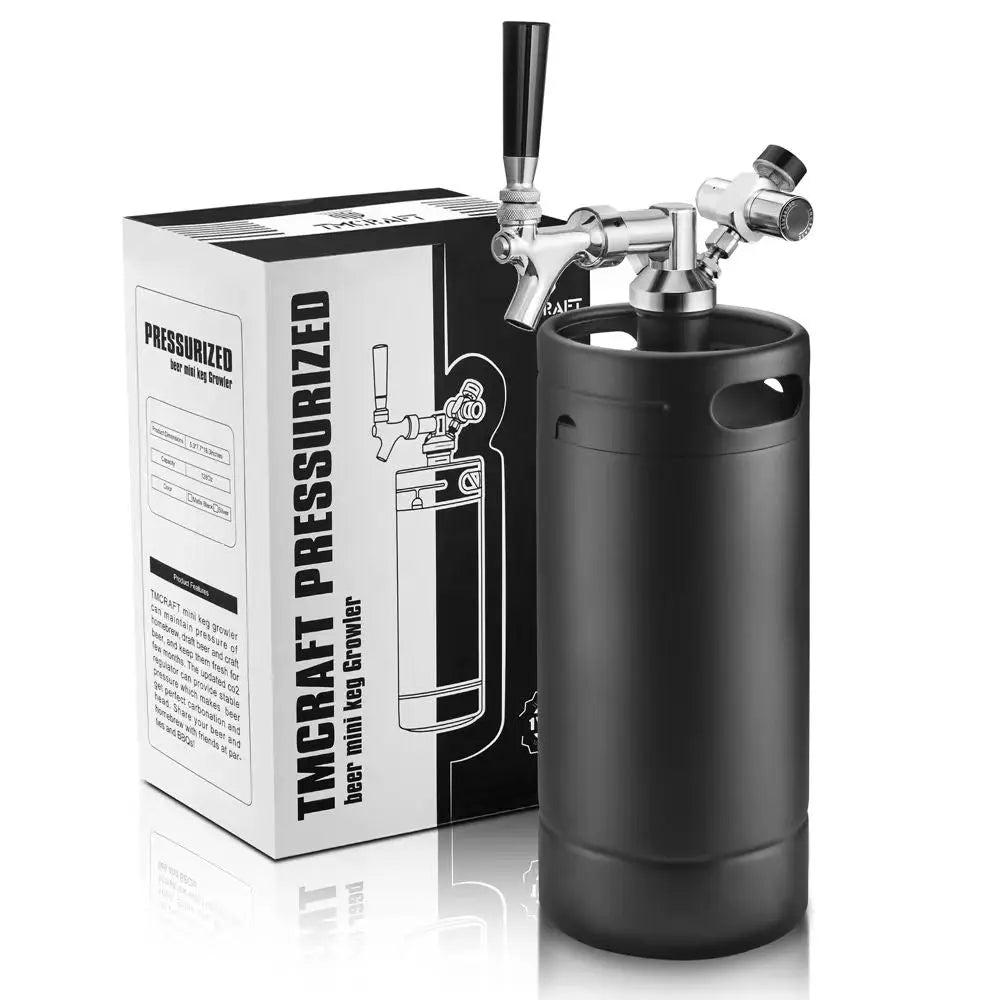-
TMCRAFT 1.6 Gallon Mini Corny Keg
Regular price $89.99 USDRegular priceUnit price / per -
TMCRAFT 2.5 Gallon Ball Lock Keg
Regular price $119.99 USDRegular priceUnit price / per -
TMCRAFT 2.6 Gallon Mini Corny Keg
Regular price $107.99 USDRegular priceUnit price / per -
TMCRAFT 3 Gallon Ball Lock Keg
Regular price $129.99 USDRegular priceUnit price / per -
TMCRAFT 6.5 Gallon Ball Lock Keg
Regular price $159.99 USDRegular priceUnit price / per -
TMCRAFT 5 Gallon Ball Lock Keg *2
Regular price $249.99 USDRegular priceUnit price / per -
TMCRAFT 3 Gallon Ball Lock Keg
Regular price $119.99 USDRegular priceUnit price / per -
TMCRAFT 5 Gallon Ball Lock Keg with Single Handle
Regular price $129.99 USDRegular priceUnit price / per -
TMCRAFT 1.6 Gallon Cleaning Ball Lock Keg
Regular price $136.99 USDRegular priceUnit price / per -
TMCRAFT 5 Gallon Ball Lock Keg
Regular price $135.99 USDRegular priceUnit price / per
Collection: Ball Lock Keg
Ball lock kegs, also known as Cornelius kegs or soda kegs, are commonly used for homebrewing and as an alternative to commercial kegs in certain settings. These kegs are relatively simple to use and maintain. Here's a basic overview of how ball lock kegs work:
Components of a Ball Lock Keg:
-
Keg Body: The main body of the keg is typically made of stainless steel and holds the liquid to be dispensed, such as beer or soda.
-
Lid: The keg has a removable lid that seals the top of the keg. The lid often includes a pressure relief valve (PRV) to release excess pressure.
-
Gas and Liquid Posts: On the top of the keg, there are two posts—one for gas (usually labeled with a gray or black ring) and one for liquid (usually labeled with a red or blue ring). These posts are fitted with quick-disconnect fittings that can be attached to gas and liquid lines.
-
Dip Tube: Inside the keg, there is a dip tube attached to the liquid post. This tube extends to the bottom of the keg, allowing liquid to be drawn from the bottom.
-
O-Rings: O-rings are rubber seals located on the posts and the keg lid. These seals create a tight and secure connection when the keg is pressurized.
How Ball Lock Kegs Work:
-
Filling: To fill a ball lock keg, you pour your beverage (e.g., beer) into the keg through the open lid. Make sure the lid's O-ring is in good condition to ensure a proper seal.
-
Sealing: After filling, you securely attach the lid to the keg. The lid's O-ring creates an airtight seal.
-
Carbonation: If you're carbonating the beverage in the keg, you connect a gas line to the gas post and pressurize the keg with the desired amount of CO2. The gas enters the keg, pressurizing it and forcing the beverage to absorb the CO2, carbonating it.
-
Dispensing: When you're ready to dispense the beverage, you connect a liquid line to the liquid post. The liquid flows out of the keg through the dip tube and out of the faucet or tap at the end of the liquid line.
-
Pressure Relief: If the pressure inside the keg becomes too high (e.g., due to excess carbonation or temperature changes), the pressure relief valve on the lid will release the excess pressure to prevent over-pressurization.
-
Maintenance: Periodically, you'll need to clean and sanitize the keg to ensure the beverage remains fresh and free of contaminants. This involves disassembling the keg, including removing the posts and O-rings, and cleaning all components thoroughly.
Ball lock kegs are a convenient and popular choice for homebrewers and those who want to store and dispense beverages like beer or soda. They provide an easy way to carbonate and serve drinks while maintaining quality and freshness.











